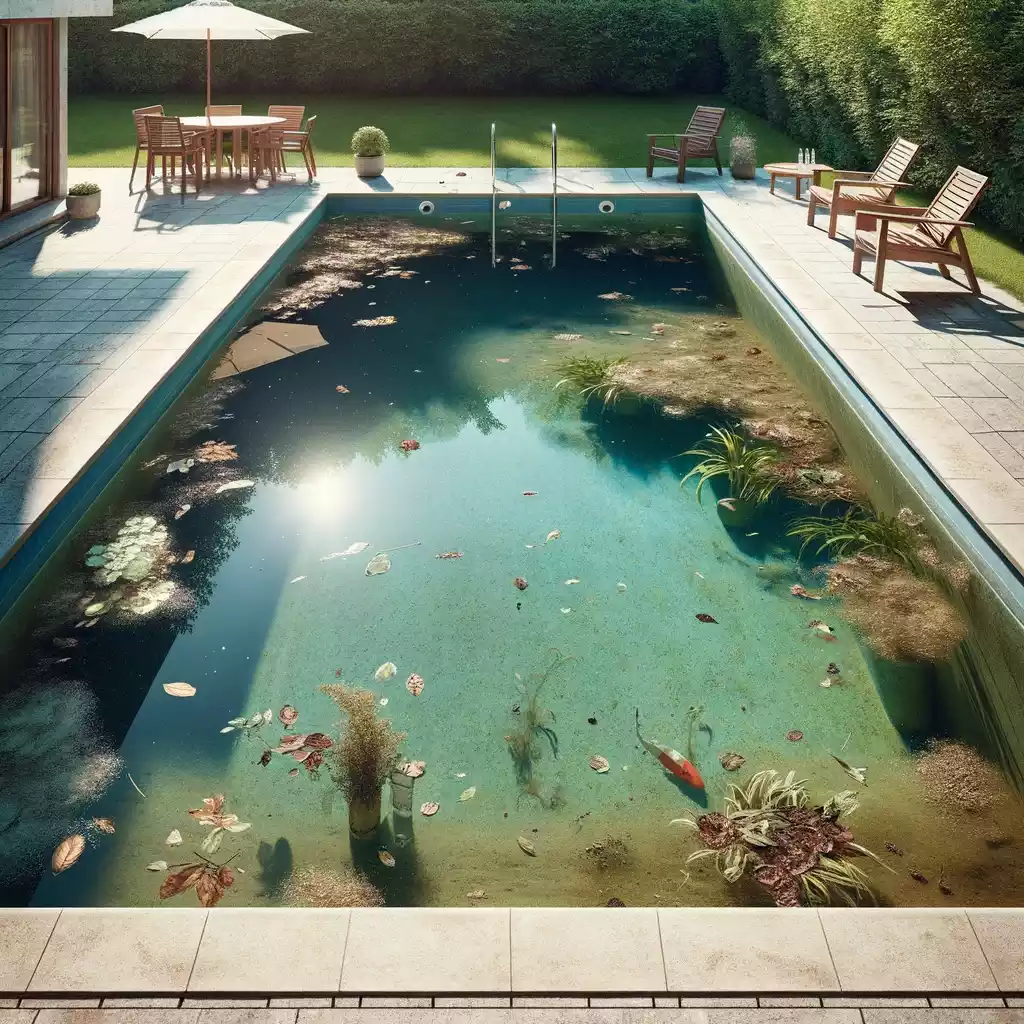Nowadays, many families have their own private swimming pools. However, maintaining the quality and upkeep of these pools is often a challenge, especially for those without a circulation system. The lack of a circulation system means that water quality can deteriorate and become difficult to maintain. Therefore, this article mainly focuses on the application of water treatment agents in swimming pools without circulation systems, to maintain water cleanliness and safety, and to ensure the health of swimmers.

Problems Arising from Pools Lacking a Circulation System
- Without effective circulation and purification in the pool, harmful substances (such as pool chemicals, sweat, cosmetics, dust, etc.) accumulate rapidly, leading to a swift deterioration in water quality.
- In still water environments, algae and bacteria proliferate more easily. This not only makes the water murkier but can also lead to skin diseases and other health issues.
- Without recirculation, chemicals like chlorine are difficult to distribute evenly in the water. This can result in some areas being over-treated, while others are insufficiently treated.
- In non-circulating pools, there are larger fluctuations in pH values. This can affect water quality and cause discomfort to the eyes and skin of swimmers.
- Without circulation, there can be significant differences in water temperature in different areas of the pool, greatly affecting swimmers.
- If a pool lacks a circulation system, its facilities (e.g., filters, pumps, etc.) may deteriorate more rapidly, as they are required to operate in harsher conditions.
How to Choose Water Treatment Agents
- In pools without a circulation system, where bacteria and algae can easily thrive, it is essential to use effective disinfectants, such as those with a higher chlorine content. Options include 2-gram disinfection tablets or multi-effect clear disinfection granules, which dissolve quickly and are particularly suitable for disinfecting and sterilizing swimming pools.
- Long-term water treatment agents, such as slow-release chlorine tablets or large granules of chlorine compounds, can remain in the water body for an extended period, thereby reducing the frequency of additions. Algaecides are used to prevent and kill algae; copper sulfate algaecides or algaecides can also be used.
- Choose products that help maintain the pH level of the pool water, such as soda ash or sodium carbonate regulators, to improve pool water quality. The stability of water pH is key to ensuring the effectiveness of water treatment agents and to prevent adverse effects on pool facilities and users.
- If the pool water is murky, turns white, or to avoid turbidity, then it is necessary to use a polyaluminium chloride precipitant.
- For cleaned pools, it is essential to remove pollutants from the bottom of the pool (such as sand, hair, leaves, etc.) using a pool vacuum. However, in pools without a circulation system and not using polyaluminium chloride for precipitation, manual vacuums are the only option.
In conclusion, although pools without a recirculation system are more challenging to maintain, by properly using water treatment agents, regularly cleaning, and monitoring water quality parameters, we can still ensure the cleanliness and safety of the water.